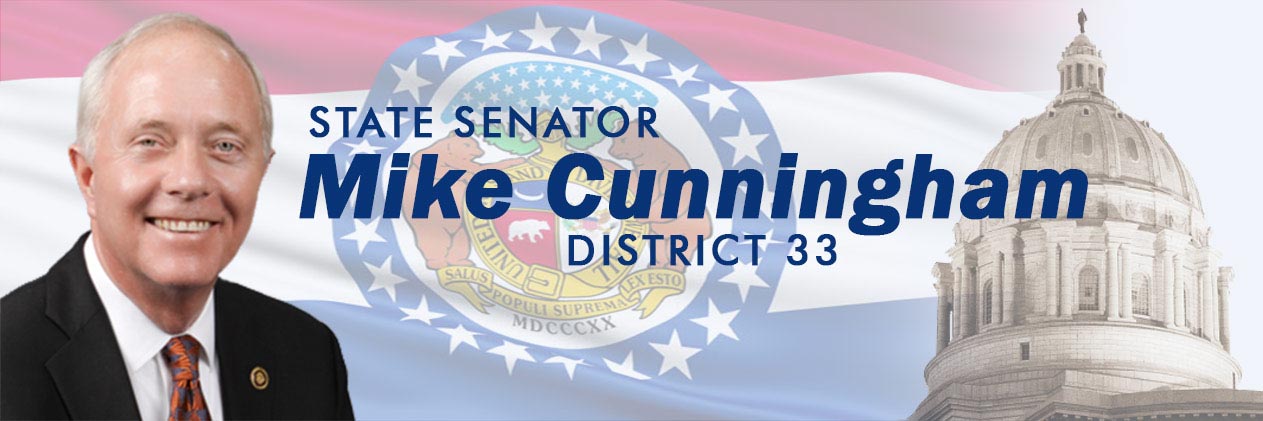
Legislative Column for Sept. 27, 2019
One of the most gratifying things about being a state legislator is that, occasionally, the actions we take in Jefferson City have real impact on the lives of everyday Missourians. It is especially rewarding when children benefit from our decisions. I had one such occasion recently, as I received an update on a program to expand science and technology education in my Senate district.
During the 2019 legislative session, the General Assembly included $250,000 in the 2020 Fiscal Year Budget to expand Project Lead the Way, an initiative to encourage science and technology curriculums in our K-12 classrooms. As a member of the Senate Appropriations Committee, I have been working on securing this funding for several years. We finally got it done this year, with the support of our current governor.
The money will go to Missouri S&T University to help spread high-tech education throughout 10 south-central Missouri counties, including six within my 33rd Senatorial District. Traditionally, school children in these counties have not enjoyed the same resources and benefits as their urban and suburban cousins. The money the Legislature earmarked for these counties is an attempt to address that discrepancy.
The 10 counties targeted for funding are collectively known as SOAR, or the Southern Alliance for Rural Development. Of these, Douglas, Howell, Oregon, Ozark, Texas and Wright counties are part of the district I serve. Neighboring Shannon, Reynolds, Carter and Wayne counties will also receive funding.
Project Lead the Way is an effort to prioritize STEM – science, technology, engineering and math – in our schools. Jobs in the 21st century will be much more complex and technical than anything we’ve seen in the past. If we are going to attract employers and keep good jobs in our area, it’s vital that we prepare our children to compete in today’s high-tech workplace. Not every student will go to college, but all young people can benefit from a foundation in the STEM fields.
Through Project Lead the Way, or PLTW, elementary and secondary school teachers are trained to incorporate science and technology-based lessons into their classrooms. Teachers attend workshops and seminars that help them develop hands-on STEM curriculums. The goal is not just to expose students to high-tech gadgets, but to prepare them to become an effective member of the workforce. Students learn communications and teamwork skills, at the same time they are exposed to the latest technology.
Statewide, more than 650 schools are involved in Project Lead the Way, a nationwide nonprofit organization solely focused on encouraging science, technology, engineering and mathematics education in the K-12 setting. Missouri S&T has been the primary PLTW affiliate in our state since the program began in 1997. Currently, 80 of Missouri’s 114 counties have at least one active Project Lead the Way program. Although Webster and Ripley counties are not included in the SOAR geographic area targeted in this year’s funding, they are counted among the Project Lead the Way network.
The Legislature approved the new funding because it wanted to increase opportunities for school children in some of Missouri’s poorest counties. The money that S&T receives will help bring or expand PLTW opportunities in schools that don’t have the budgets to include STEM programs in their existing curriculums. The new funding will not replace local support for schools but rather help level the playing field for some that haven’t yet been able to get in the game. So, while any school can have access to PLTW resources online, only schools in the SOAR area will receive additional funding for materials and teacher development.
So far, 15 of the 41 school districts in the SOAR region have received funding through PLTW. These programs will impact more than 4,400 students. Participation in the program varies by school district and the program includes a variety of age-appropriate curriculums. It’s up to each school to decide what they can provide, given their own resources. The possibilities are almost limitless, though. Computer programming, engineering and even biomedical science await students in districts that fully implement the PLTW program.
If our children are going to keep up, we must provide the tools for them to enter the workplace prepared. Throughout the 2019 legislative session we heard that workforce development is Missouri’s No. 1 priority. If that’s statement means anything, we must begin with our children, the workforce of tomorrow.
It is my great honor to represent the citizens of the 33rd Senatorial District. Although the Legislature has adjourned for 2019, I remain your senator throughout the year. If there’s anything that I can do to assist you, please feel free to contact my Capitol office at (573) 751-1882.
